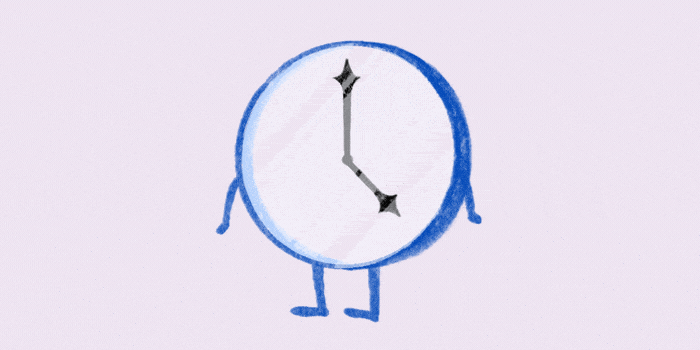Job hunting after hours is a strain – here’s how to manage it

Applying for a job takes a lot of work. And, that work is usually done before or after an eight-hour workday at the place you are trying to move on from. It’s exhausting.
The amount of time it takes to hire a new employee reached an all-time high of 44 days in early 2023, according to a report by HR and research advisory company Josh Bersin Company and AMS, a workforce solutions firm.
“Hiring processes are becoming increasingly protracted,” said Khyati Sundaram, CEO of ethical hiring experts, Applied. “Pre-recorded interviews are followed by phone interviews, followed by Zoom interviews, followed by in-person interviews. Written applications, group assessments and task stages are not uncommon either.”
New technologies like application portals are supposed to make it a faster experience. However, people end up having to upload their resume just to type it all out in each section anyway so that the system has the information in the right spots. It’s like navigating a maze, except you need to do it over and over again because of the inability to reuse information across different application tracking systems.
Shikhar Sachdev, a tech worker based in San Francisco, applied to 250 jobs to track application times. He found that older application tracking systems like Workday and Taleo make job applications as much as 128% longer. For example, Workday makes you create a new account every single time you find a new job you want to apply for and it also redirects you away from the careers page.
And that’s just the first step of the interview process. If a job seeker ends up getting an interview, the number of hours that might go into researching and preparing might really add a load to your day. Even further into the process, there might be a work task to complete. Writer Sonia Weister has asked job applicants to add to a spreadsheet to help paint the picture of how much unpaid labor is included in some interview processes. For example, someone applying for Apple News said they had to do a curation for the news section and weekend reads, which “took hours.” Someone applying for E! News said they were asked to do a six-hour unpaid edit test (they declined). And sometimes it’s all for absolutely nothing: a job candidate at Bloomberg News said they had to do a combination writing and editing test of three articles and “got ghosted.”
Needless to say, the job application experience can be draining. So how can job seekers maximize their time when they are trying to still put their best foot forward at their 9 to 5 and also have other personal obligations? We spoke to workplace experts for a roundup of the best tips to maximize time.
Fine-tune your search early and clarify employers’ expectations
Hiring process stages vary a lot between different companies and even roles. That’s why Sundaram suggests making sure that job seekers have a clear understanding of expected timelines, stages and means of assessment from the outset.
“This way you can make an informed decision about whether you’re prepared to commit to the process, and be prepared to put your best foot forward,” said Sundaram.
Ask early on if you will be expected to complete a task as part of the hiring process, which is sometimes the most lengthy part. Get details around how long it should take and understand the guidelines around this. If they ask for you to submit something within a week, and you have multiple deadlines at work that week, it could be worth it to ask them for an extension with the understanding that you still are working a 9 to 5.
If job seekers don’t feel comfortable asking recruiters this, sites like Glassdoor can be helpful to get more information on the interview process and the time commitment. Additionally, shared resources like the spreadsheet Weister put together can help provide transparency around what you’re walking into.
Bunch what you’re doing and leverage technology to slim time
Dustin Siggins, founder of media relations firm Proven Media Solutions, suggests either dedicating an hour every night before bed for the job search, or breaking it up into 10 minute intervals throughout the day.
“Maybe in between breakfast and leaving for work you apply for two jobs,” said Siggins. “It might provide more focus rather than an hour where you get exhausted. It depends.”
Mahati Singh, who has worked in recruiting for over 10 years, agrees that using lunch hours and other blocks of your day could help people find the time to apply while also balancing the duties of their day job. Besides this, though, she recommends leveraging technology so that instead of spending time searching for jobs, you get alerts based on what you’re searching for.
“Put social media to your use,” said Singh.
People who are unemployed and looking for a job can add #opentowork banners to their LinkedIn, or share with their network that they’re seeking a job. Naturally, that’s harder when you’re still doing your current job, but Singh recommends continuing to share your work on these platforms, which will lead to more visibility in terms of work accomplishments and a strong personal brand.
Take your time and network where you’re at
Siggins suggests that while you go into the office, set up networking opportunities during your lunch hours or do it right after work for dinner.
“Network while you’re doing other things,” said Siggins. “Double up on your time if you can. There’s less rest in the short term, but overall it shortens the search.”
Overall, though, one of the benefits of looking for a job when you already have one is that you might have more time to weigh pros and cons versus someone who needs the first job they’re offered. “There’s not as much of a rush,” said Singh. “The thing that is lacking in your current job, try to make sure that you won’t find that at the next job.”
Siggins agrees. It sets you up with the opportunity to find a job you want to settle into for a while. “Looking for work while you’re working can be exhausting, tiring and sometimes feel unfair,” said Siggins. “Know what you want to do so that you increase your chances and you don’t need to look for work for a while.”


